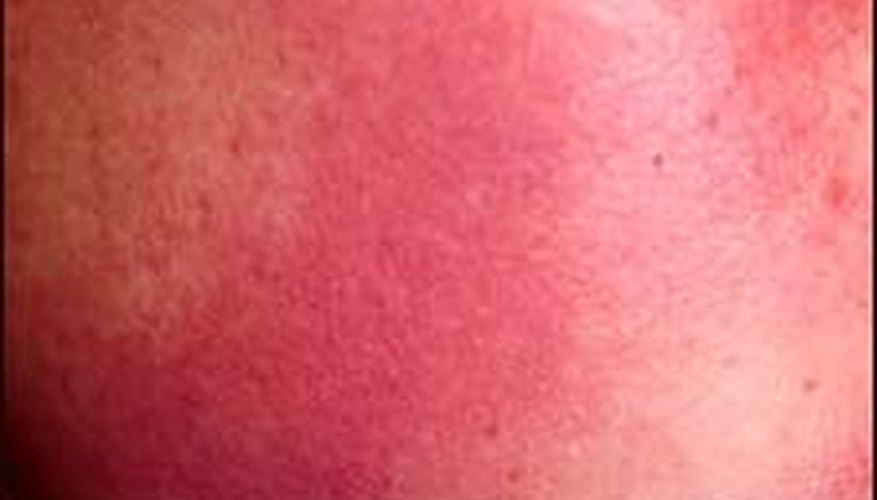Keratosis pilaris is a skin condition that affects many adults in the world. Some statistics show that it affects around half of adults, and even some babies have been known to have the condition. The condition is characterised by bumps, usually on the upper arms and thighs, but sometimes appearing on the face. This type of keratosis pilaris (or KP) is referred to as keratosis pilaris rubra faceii (KPRF) and is sometimes mistaken for acne.
Identification
KP can be identified by the tiny bumps it creates, usually small, conical shaped papules under the skin. In the case of KPRF, the bumps occur on the face, usually the cheeks. The bumps occur in patches and cause the cheeks to appear red and inflamed. This is due to irritation and can look very similar to another skin condition, roscaeca.
- KP can be identified by the tiny bumps it creates, usually small, conical shaped papules under the skin.
Causes
KP is caused by the overproduction of keratin, which clogs hair follicles on the body. If a bump is removed, you can often find a tiny hair. KPRF has the same root causes--more dead skin produced by keratin than the skin can handle, causing a blockage. KPRF is not acne, which is caused by bacteria. Though the reason some people have various forms of KP is not definitely known, it is believed to be a genetic trait passed down.
- KP is caused by the overproduction of keratin, which clogs hair follicles on the body.
- KPRF has the same root causes--more dead skin produced by keratin than the skin can handle, causing a blockage.
Treatment
Much like KP on other parts of the body, treatment for KPRF is the same. Because KP is a dry skin condition, it is important to keep the area well hydrated. There are various lotions that aid in this. It is also important to keep the skin exfoliated, and some people have found satisfying results with using exfoliaters and lotions containing urea and various acids, like glycolic, salicylic and lactic. It is important to remember that the face is much more sensitive than other parts of the body. Scrubbing the face will not make the condition go away; rather, it may worsen the redness. There are also prescription medicines that dermatologists can recommend in some cases of KPRF. Although there is no cure for KP, most doctors agree that keeping up with treatments and time are the best ways to produce results.
- Much like KP on other parts of the body, treatment for KPRF is the same.
- Because KP is a dry skin condition, it is important to keep the area well hydrated.
Misconceptions
KP and its types, including KPRF, are not contagious conditions. Although they may look harmful and unattractive, they are harmless, and the person who has the condition has no reason to treat it, except for the fact that they may find it unsightly and annoying, especially if the bumps appear on the face and are more noticeable. It is also a misconception that continuous scrubbing will make the condition go away. It will not, but the scrubbing will irritate the skin.
- KP and its types, including KPRF, are not contagious conditions.
- Although they may look harmful and unattractive, they are harmless, and the person who has the condition has no reason to treat it, except for the fact that they may find it unsightly and annoying, especially if the bumps appear on the face and are more noticeable.
Considerations
Many people have reported that their KP has got better due to being out in the sun. It is important to remember good sun safety if that is an option that works. Also, KP seems to worsen in the winter months, so it is important to keep skin supple with moisturisers. KP severity also seems to lessen with age. Some have reported that the condition is completely gone by the time they are in their 30s.
- Many people have reported that their KP has got better due to being out in the sun.
- Also, KP seems to worsen in the winter months, so it is important to keep skin supple with moisturisers.
